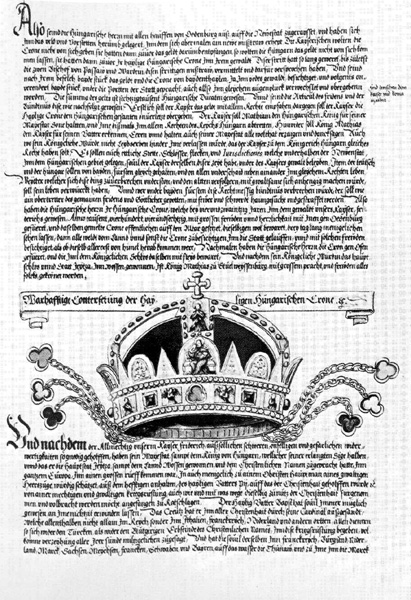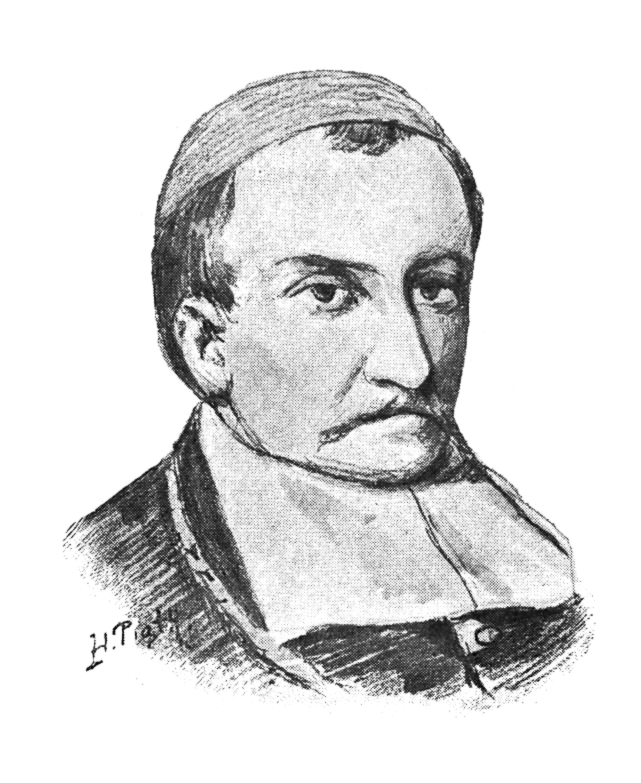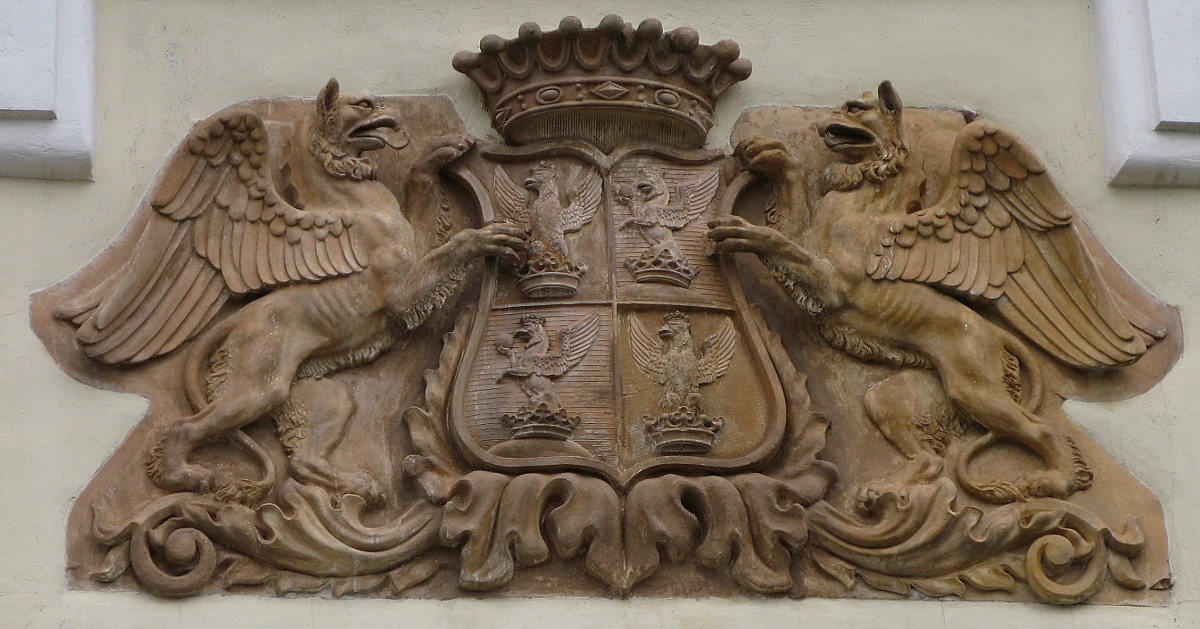|
Coloman Of Hungary
Coloman the Learned, also the Book-Lover or the Bookish ( hu, Könyves Kálmán; hr, Koloman; sk, Koloman Učený; 10703February 1116) was King of Hungary from 1095 and King of Croatia from 1097 until his death. Because Coloman and his younger brother Álmos were underage when their father Géza I died, their uncle Ladislaus I ascended the throne in 1077. Ladislaus prepared Colomanwho was "half-blind and humpbacked", according to late medieval Hungarian chroniclesfor a church career, and Coloman was eventually appointed bishop of Eger or Várad (Oradea, Romania) in the early 1090s. The dying King Ladislaus preferred Álmos to Coloman when nominating his heir in early 1095. Coloman fled from Hungary but returned around 19 July 1095 when his uncle died. He was crowned in early 1096; the circumstances of his accession to the throne are unknown. He granted the Hungarian Duchyone-third of the Kingdom of Hungaryto Álmos. In the year of Coloman's coronation, at least five large gr ... [...More Info...] [...Related Items...] OR: [Wikipedia] [Google] [Baidu] |
János Thuróczy
("judge") , honorific_suffix = , image = Thuroczy elso lap.jpg , image_size = , alt = , caption = The first page of Thuroczy's chronicle , pseudonym = , birth_name = , birth_date = , birth_place = , death_date = 1488 or 1489 , death_place = , resting_place = , occupation = Historian , language = Latin , nationality = Hungarian , ethnicity = , citizenship = , education = , alma_mater = Premonstratensian monastery in Ipolyság , period = , genre = , subject = , movement = , notableworks = ''Chronica Hungarorum'' , spouse = , partner = , children = , relatives = , awards = , signature = , signature_alt = , years_active = 1486 – 1488 , module = , website = , portaldisp = Johannes de Thurocz ( hu, Thuróczi János; sk, Ján z Turca or ''Ján de Turocz'', german: Johannes de Thurocz, variant contemporary spelling: ''de Thwrocz'') ( – 1488 or 1489), was a ... [...More Info...] [...Related Items...] OR: [Wikipedia] [Google] [Baidu] |
Roman Catholic Archdiocese Of Eger
The Archdiocese of Eger ( la, Archidioecesis Agriensis) is an archdiocese in Northern Hungary, its centre is the city of Eger. History * 1000: Established as Diocese of Eger * August 9, 1804: Promoted as Metropolitan Archdiocese of Eger Ordinaries, in reverse chronogical order Archbishops of Eger * Csaba Ternyák (2007-present) * István Seregély (1987-2007) * László Kádár, O. Cist. (1978-1986) * József Bánk (1974-1978) * Pál Brezanóczy (1969-1972) * Gyula Czapik (1943-1956) * Lajos Szmrecsányi (1912-1943) * József Samassa (1873-1912) (Cardinal in 1905) * Béla Bartakovics (1850-?) * Ladislaus Pyrker, O.Cist. (1827-1847) * István Fisher (1807-1822) * Ferenc Fuchs (1804-?) Bishops of Eger * Tamás Pálffy (1660-1678) * Benedict Kisdy (1648-1660) * György Jakusics (1642-1647) * György Lippay (1637-1642) * István Szuhay (1600-1607) * Antal Verancsics (1560-1573), appointed Archbishop of Esztergom (elevated to Cardinal in 1573) * Ferenc Ujlaky (1554-1555) ... [...More Info...] [...Related Items...] OR: [Wikipedia] [Google] [Baidu] |
Gyula Kristó
Gyula Kristó (11 July 1939 – 24 January 2004) was a Hungarian historian and medievalist, member of the Hungarian Academy of Sciences The Hungarian Academy of Sciences ( hu, Magyar Tudományos Akadémia, MTA) is the most important and prestigious learned society of Hungary. Its seat is at the bank of the Danube in Budapest, between Széchenyi rakpart and Akadémia utca. Its ma .... Life Gyula Kristó was born in Orosháza on 11 July 1939. He studied at the József Attila University Szeged between 1957 and 1962. Awards *For the 1300-Year-Old Bulgaria (1981) *Albert Szentgyörgyi Prize (1994) Works *''A vármegyerendszer kialakulása Magyarországon'' he Development of the Counties in Hungary(1988) *''A magyar állam megszületése'' he Birth of the Hungarian State Sources * 20th-century Hungarian historians Historians of Hungary Members of the Hungarian Academy of Sciences University of Szeged alumni 1939 births 2004 deaths People from Orosháza [...More Info...] [...Related Items...] OR: [Wikipedia] [Google] [Baidu] |
Synadene
Synadene ( el, Συναδηνή, hu, Szünadéné) was a Byzantine Greek woman who briefly acted as queen consort of Hungary, probably in the 1070s. She was most likely married to King Géza I. Husband's identity Synadene's first name is unknown. Her father was the Byzantine commander Theodoulos Synadenos, while her mother was a sister of Nikephoros III Botaneiates, Byzantine emperor since 1078. ''Scylitzes Continuatus'', believed to have been written by Synadene's compatriot John Skylitzes, states that "the emperor had given his niece the Synadene, daughter of Theodoulos Synadenos, to the krales of Hungary for a wife; upon his death she returned to Byzantium." The king's name, much like her own, is not mentioned. An important clue to the identity of Synadene's husband lies in one of the enamel plaques contained in the Holy Crown of Hungary, which depicts a man identified as " Géza, faithful king of the Hungarians". Géza I's death on 25 April 1077 corresponds to Skylitzes ... [...More Info...] [...Related Items...] OR: [Wikipedia] [Google] [Baidu] |
Holy Crown Of Hungary
The Holy Crown of Hungary ( hu, Szent Korona; sh, Kruna svetoga Stjepana; la, Sacra Corona; sk, Svätoštefanská koruna , la, Sacra Corona), also known as the Crown of Saint Stephen, named in honour of Saint Stephen I of Hungary, was the coronation crown used by the Kingdom of Hungary for most of its existence; kings have been crowned with it since the twelfth century. The Crown symbolized the King's authority over the Lands of the Hungarian Crown (the Pannonian Basin, Carpathian Basin), and it was a key mark of Legitimacy (political), legitimacy. Through the history of Hungary, more than fifty kings were crowned with it, until 1916 and the last king Charles I of Austria, Charles IV. The only kings not so crowned were Władysław III of Poland, Wladyslaw I, John Sigismund Zápolya and Joseph II, Holy Roman Emperor, Joseph II. The enamels on the crown are mainly or entirely Byzantine Empire, Byzantine work, presumed to have been made in Constantinople (present-day Istanbul, ... [...More Info...] [...Related Items...] OR: [Wikipedia] [Google] [Baidu] |
Gallus Anonymus
''Gallus Anonymus'' ( Polonized variant: ''Gall '') is the name traditionally given to the anonymous author of ''Gesta principum Polonorum'' (Deeds of the Princes of the Poles), composed in Latin between 1112 and 1118. ''Gallus'' is generally regarded as the first historian to have described the history of Poland. His ''Chronicles'' are an obligatory text for university courses in Polish history. Very little is known of the author himself and it is widely believed that he was a foreigner. Kromer The only source for ''Gallus real name is a note made by Prince-Bishop of Warmia Marcin Kromer (1512–89) in the margin of folio 119 of the "Heilsberg manuscript."Paul W. Knoll and Frank Schaer, eds., ''Gesta Principum Polonorum: The Deeds of the Princes of the Poles'', Budapest, 2003, pp. xxiv—v. It reads: ''Gallus hanc historiam scripsit, monachus, opinor, aliquis, ut ex proemiis coniicere licet qui Boleslai tertii tempore vixit'' (''Gallus'' wrote this history, some monk, in my opin ... [...More Info...] [...Related Items...] OR: [Wikipedia] [Google] [Baidu] |
Béla II Of Hungary
Béla the Blind ( hu, Vak Béla; hr, Bela Slijepi; sk, Belo Slepý; 1109 – 13 February 1141) was King of Hungary and Croatia from 1131 to 1141. He was blinded along with his rebellious father Álmos on the order of Álmos's brother, King Coloman of Hungary. Béla grew up in monasteries during the reign of Coloman's son Stephen II. The childless king arranged Béla's marriage with Helena of Rascia, who would become her husband's co-ruler throughout his reign. Béla was crowned king at least two months after the death of Stephen II, implying that his accession to the throne did not happen without opposition. Two violent purges were carried out among the partisans of his predecessors to strengthen Béla's rule. King Coloman's alleged son Boris tried to dethrone Béla but the king and his allies defeated the pretender's troops in 1132. In the second half of Béla's reign, Hungary adopted an active foreign policy. Bosnia and Split seem to have accepted Béla's suzeraint ... [...More Info...] [...Related Items...] OR: [Wikipedia] [Google] [Baidu] |
Croatian Nobility
Croatian nobility ( hr, plemstvo, lit=vlastelin; french: la noblesse) was a privileged social class in Croatia during the Antiquity and Medieval periods of the country's history. Noble families in the Kingdom of Croatia included high ranking populates from Slavonia, Dalmatia, Istria, and Republic of Ragusa. Members belonged to an elite social hierarchy, normally placed immediately behind blood royalty, that possessed considerably more privileges or eminence than most other classes in a society. Membership thereof typically was often hereditary. Historically, membership in the nobility and the prerogatives thereof have been regulated or acknowledged by the monarch. Acquisition of sufficient power, wealth, military prowess or royal favour enabled commoners to ascend into the nobility. The country's royalty was heavily influenced by France's nobility resulting members of the Royal Courts to assume French titles and practices during French occupation. The controversial assumption o ... [...More Info...] [...Related Items...] OR: [Wikipedia] [Google] [Baidu] |
Pacta Conventa (Croatia)
Pacta conventa (Latin for "agreed accords") was an agreement concluded between King Coloman of Hungary and the Croatian nobility in 1102 or afterwards, defining the status of Croatia in the union with Hungary. The earliest manuscript of the document is of the fourteenth century, so some historians believe it is likely a forgery. The document titled ''Pacta conventa'' or ''Qualiter'' (the first word in the document) was found in a Trogir library. Until the 19th century it was considered that it dated to 1102. However, historians today hold that it is not an authentic document from 1102 and likely a forgery from the 14th century, but that the contents of the Pacta Conventa still correspond to the political situation of that time in Croatia.Pál Engel''Realm of St. Stephen: A History of Medieval Hungary'' 2005, p. 35-36Bárány, Attila (2012). "The Expansion of the Kingdom of Hungary in the Middle Ages (1000– 1490)". In Berend, Nóra. The Expansion of Central Europe in the Middle A ... [...More Info...] [...Related Items...] OR: [Wikipedia] [Google] [Baidu] |
Holy Land
The Holy Land; Arabic: or is an area roughly located between the Mediterranean Sea and the Eastern Bank of the Jordan River, traditionally synonymous both with the biblical Land of Israel and with the region of Palestine. The term "Holy Land" usually refers to a territory roughly corresponding to the modern State of Israel and the modern State of Palestine. Jews, Christians, and Muslims regard it as holy. Part of the significance of the land stems from the religious significance of Jerusalem (the holiest city to Judaism, and the location of the First and Second Temples), as the historical region of Jesus' ministry, and as the site of the first Qibla of Islam, as well as the site of the Isra and Mi'raj event of 621 CE in Islam. The holiness of the land as a destination of Christian pilgrimage contributed to launching the Crusades, as European Christians sought to win back the Holy Land from Muslims, who had conquered it from the Christian Eastern Roman Empire in ... [...More Info...] [...Related Items...] OR: [Wikipedia] [Google] [Baidu] |
First Crusade
The First Crusade (1096–1099) was the first of a series of religious wars, or Crusades, initiated, supported and at times directed by the Latin Church in the medieval period. The objective was the recovery of the Holy Land from Islamic rule. While Jerusalem had been under Muslim rule for hundreds of years, by the 11th century the Seljuk takeover of the region threatened local Christian populations, pilgrimages from the West, and the Byzantine Empire itself. The earliest initiative for the First Crusade began in 1095 when Byzantine emperor Alexios I Komnenos requested military support from the Council of Piacenza in the empire's conflict with the Seljuk-led Turks. This was followed later in the year by the Council of Clermont, during which Pope Urban II supported the Byzantine request for military assistance and also urged faithful Christians to undertake an armed pilgrimage to Jerusalem. This call was met with an enthusiastic popular response across all social c ... [...More Info...] [...Related Items...] OR: [Wikipedia] [Google] [Baidu] |
Kingdom Of Hungary
The Kingdom of Hungary was a monarchy in Central Europe that existed for nearly a millennium, from the Middle Ages into the 20th century. The Principality of Hungary emerged as a Christian kingdom upon the Coronation of the Hungarian monarch, coronation of the first king Stephen I of Hungary, Stephen I at Esztergom around the year 1000;Kristó Gyula – Barta János – Gergely Jenő: Magyarország története előidőktől 2000-ig (History of Hungary from the prehistory to 2000), Pannonica Kiadó, Budapest, 2002, , p. 687, pp. 37, pp. 113 ("Magyarország a 12. század második felére jelentős európai tényezővé, középhatalommá vált."/"By the 12th century Hungary became an important European factor, became a middle power.", "A Nyugat részévé vált Magyarország.../Hungary became part of the West"), pp. 616–644 his family (the Árpád dynasty) led the monarchy for 300 years. By the 12th century, the kingdom became a European middle power within the Western world ... [...More Info...] [...Related Items...] OR: [Wikipedia] [Google] [Baidu] |






